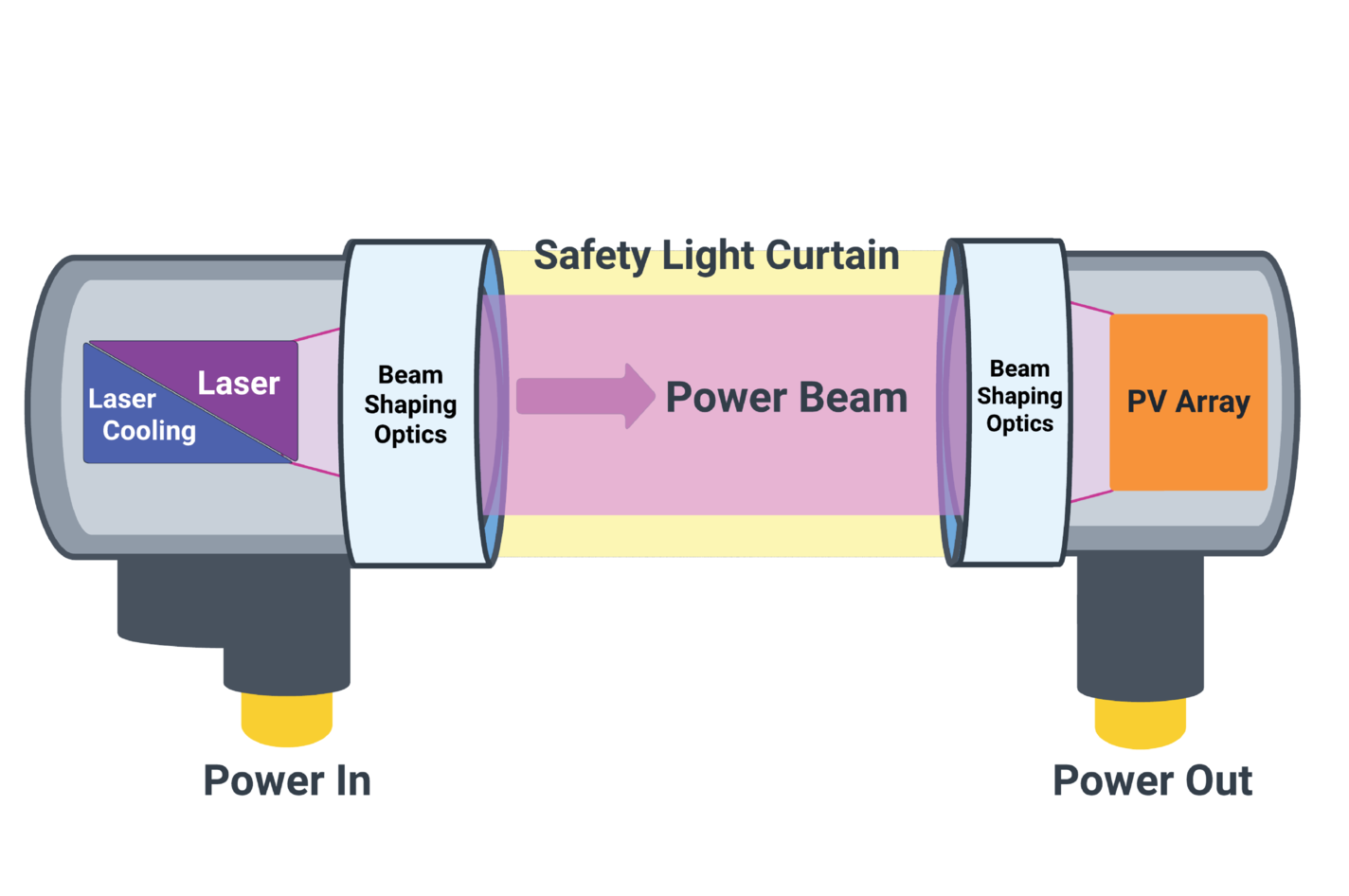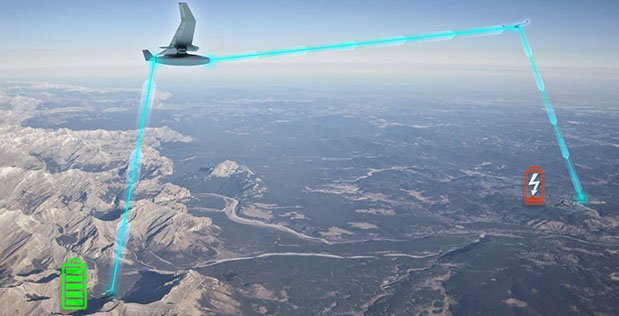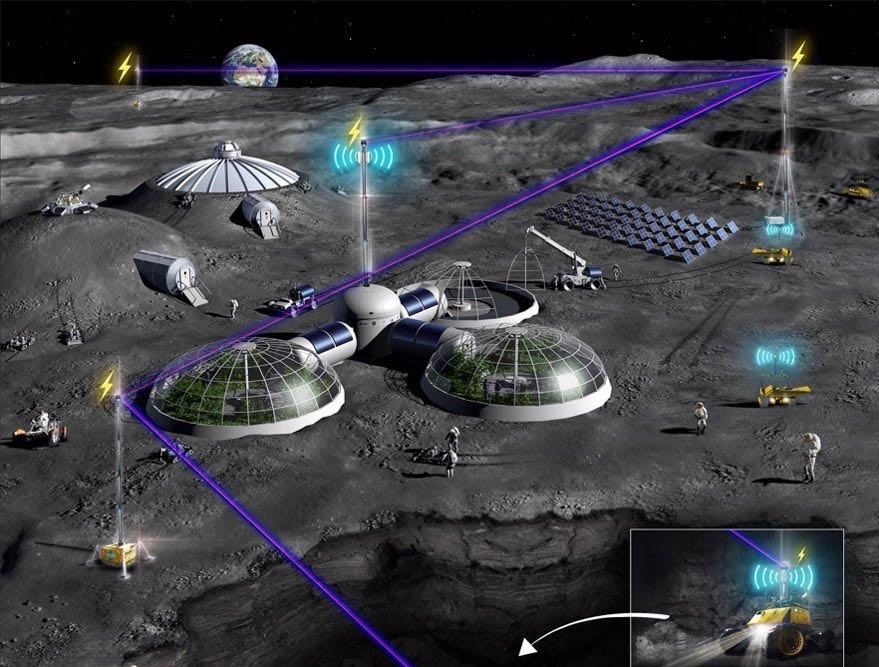The Defense Advanced Research Projects Agency (DARPA) is gearing up to deploy a next-generation wireless energy transmission and distribution system, made possible thanks to its partnership with a leader in long-distance wireless power beaming technology.
American engineering company PowerLight Technologies, which specializes in energy transmission systems that include technologies capable of delivering wireless power using lasers, has announced they were selected alongside several other industry leaders to partner with DARPA on its innovative Persistent Optical Wireless Energy Relay (POWER) program.
One of the most ambitious efforts DARPA currently has in development, the POWER program aims to produce a dynamic wireless energy web capable of using beam technology to send power to warfighters at the speed of light, enabling a multi-path energy network that can deliver wireless power across multiple domains.
A key component driving the POWER program is PowerLight’s innovative technology, which converts kilowatts of electricity from virtually any source into high-powered directed beams of light that can be safely—and invisibly—beamed to a receiver designed to convert the light it receives back into usable power.
Invisible Power Transmission for Tomorrow’s Military
PowerLight’s wireless power beaming technology works by collecting electricity that is converted into photons in the form of a concentrated beam of laser light. The beam is then shaped and optimized to retain its power, and is surrounded by a safety shutoff ring preventing anything that may inadvertently cross paths with it before being fired across distances. The energy is collected once it reaches its destination using a specialized solar panel, after which it is then converted back into usable electricity.


In addition to its beaming technologies, PowerLight has also developed power over fiber capabilities, as well as an advanced safety system architecture, paving the way toward their large-scale implementation not only for DARPA’s current efforts with the POWER program, but also for industrial applications in the years ahead.
Speaking with The Debrief in an interview, PowerLight CTO and cofounder Tom Nugent said the company’s unofficial tagline has become “kilowatts over kilometers,” as they have worked to optimize technology for use in telecommunications, defense, space, and other sectors that require power-beaming capabilities over great distances.
Nugent said the company had its genesis in 2006 when he met the late Dr. Jordan Kare, who cofounded the endeavor with him under the company name LaserMotive (which became PowerLight Technologies in 2017).
“We put together a team and won the NASA Centennial Challenge in power beaming at the end of 2009,” Nugent told The Debrief. Following that success, Nugent and another team member resigned from their jobs at the time to focus solely on the development of power beaming technology.
“We spent a number of years in what I call R&D mode, expanding the different performance capabilities,” Nugent said, which included gauging the distance over which power beaming could reliably be achieved, as well as implementing safety features for its use.
Although there were always commercial applications in mind, a crucial step in facilitating the development of the company’s wireless power beaming capabilities was its decision to collaborate with the U.S. Department of Defense in creating innovative solutions to a range of challenges the military faces.
“The company made the move in 2015 to align with the Department of Defense, because it was too early for commercial activity,” Richard Gustafson, PowerLight’s CEO and Director, told The Debrief during the interview.
“We’ve spent over seven years in the Department of Defense going through very rigorous tests, validation, and third-party documentation of this technology,” Gustafson said. “This has been really a game of survival, where you can envision and prove out that the technology is going to have value in these applications.”
Key to the development of PowerLight’s capabilities through its partnership with the DoD had been finding unique solutions to one of the military’s longest-standing challenges.
“It was power on the battlefield and how to deliver power to remote operating places that are difficult to come by today,” Gustafson told The Debrief, “where you have air drops from helicopters bringing diesel fuel in.”


Reliably delivering power to war zones that are, at times, among the most difficult places in the world to reach is no simple task. Rising to this challenge, along with the development of capabilities for powering drones, as well as the wide range of sensors and assets currently used by the U.S. military, were all among the fundamental goals PowerLight focused on addressing.
However, Gustafson said that the company’s focus on many of these defense applications began to reveal complementary areas of industry where such technologies could have similar beneficial applications.
“It turns out that, when you look at those use cases, and start to construct them, there’s a lot of parallel to what’s going on with industry,” Gustafson told The Debrief, pointing to power required for 5G small cells, delivery drones, and a range of other technologies.
“They all need power,” Gustafson said. “Well, how do you distribute power when the grid is constrained in terms of what it’s able to reach?”
“That process of going through all those years of validation has opened up the door for industry and commercial companies to look at us and go, ‘this technology is real, and it’s moving faster than we had thought’.”
The Missing Link in the Military’s Power Systems
Gustafson said that a large part of the company’s success involves its focus on technological development in an area that is a fundamental component of the military’s power architecture that had previously been missing.
“Defense has put a lot of money into energy generation and power storage,” Gustafson told The Debrief. “The missing link has been distribution.”
Beyond supplying energy to hard-to-reach areas on the battlefield, Gustafson also points to space, and the current limitations imposed by the weight and storage space that carrying traditional fuel requires.
“There’s no power in space, and so you’ve got to figure out how to distribute power once you’re on the moon.”


Gustafson said that as much as the company’s wireless power-beaming technologies have secured their place as an asset for efforts like DARPA’s POWER program, it has been the safety and reliability of PowerLight’s technologies that have helped the company to become recognized as leaders.
“It’s really solidified a leadership position that PowerLight has taken, based on our beam safety systems, and the innovation around power receivers that we’ve constructed,” Gustafson said.
From Scattered Light to Directed Energy
Nugent told The Debrief that one focus of DARPA’s POWER program involves utilizing the development of technologies in the past related to directed energy weapons like high-powered lasers, which can be used to send energy from locations where it is readily available (like military bases or large sailing vessels) to harder-to-reach areas.
“The program is sort of leveraging lots of money that’s been spent by the DoD over the years on directed energy weapons, and looking to use these very high-power lasers at a site where you have energy readily available,” Nugent explained.
However, several challenges arise from attempting to project energy across great distances, which primarily involve what happens to light traveling at lower altitudes.
“The challenge is that at low altitudes, the atmosphere will absorb and scatter the light,” Nugent told The Debrief. “It makes it hard to go tens or even hundreds of kilometers. But as you get to higher altitudes, the air is much thinner. You don’t have as much dust, and so those losses can be relatively small.”
“And so by taking that power where you have it readily available, converting it into light, and sending it up to a high altitude relay… now you bounce that beam one or two or multiple times to send it hundreds of kilometers downrange where it’s beamed back down to, say, soldiers on the ground who need power for all of their devices and may not be able to return to a base or a place where power is available.”
Nugent also said aircraft that require the replenishment of power systems but may not be capable of landing are another application where such technologies could be very beneficial. However, to truly make energy transfers available across all domains, it must also be possible underwater, an environment for which PowerLight also has a unique solution.
Optical Fibers for Power Transmission
“We also have this optical power over fiber technology,” Nugent told The Debrief, which functions similar to how the company’s wireless power-beaming technology works, only with optical fibers rather than lasers.
“You don’t have to steer the power,” Nugent explained. “You’re sending it into optical fiber, and then the optical fiber transfers that light just like in free space and converts it back to electricity.”
“Fiber is useful underwater because underwater ROVs or sensors frequently have optical fiber connections already for data,” Nugent said, allowing far more secure and flexible power distribution to deep-sea locations and in other underwater settings.
Wireless Power Beaming to Space, and Beyond
Nugent told The Debrief there are numerous space-based applications for PowerLight’s technology, which include satellite-to-satellite power transmission, as well as beaming power to spacecraft, space observatories, and even rovers on the surface of the moon.
“There’s certainly a lot of interest in beaming power to rovers going into the permanently shadowed craters on the moon,” Nugent said. “And there’s interest in beaming power from lunar orbit down to the surface when you’re away from the poles to get you through the two-week lunar night.”
“Our simple vision was to commercialize this technology a decade ago,” Gustafson told The Debrief during the interview, “not knowing exactly what that was gonna look like, because nobody could predict it.”
“When you can look at the distribution of power from the point of generation to the point of need without having an infrastructure in between, that is a very big proposition. That’s a proposition for developing countries, and for the idea of beaming power from space to Earth.”
“So, all this has a chance to be a very big play in economic development on the future of how we operate and live off of this planet,” Gustafson said.
“We didn’t know where all this was going. And now we’re at a place where it’s becoming more clear, and it’s a lot more exciting because the technology is real.”
“It is genuinely getting intensely exciting,” Gustafson added.
“We couldn’t have ever anticipated this.”
Micah Hanks is the Editor-in-Chief and Co-Founder of The Debrief. He can be reached by email at micah@thedebrief.org. Follow his work at micahhanks.com and on Twitter: @MicahHanks.

